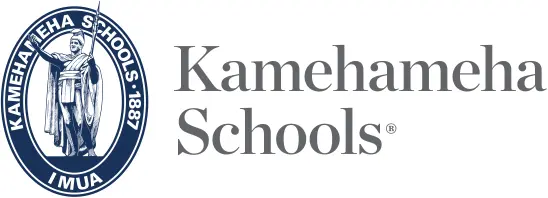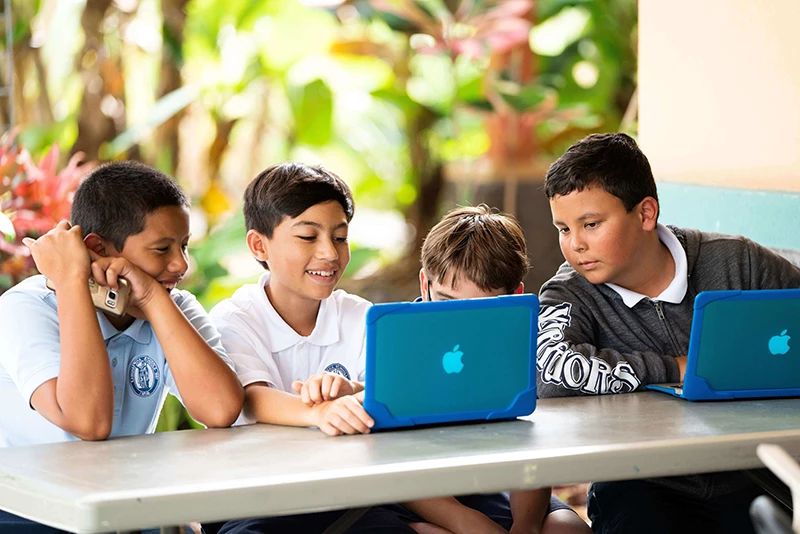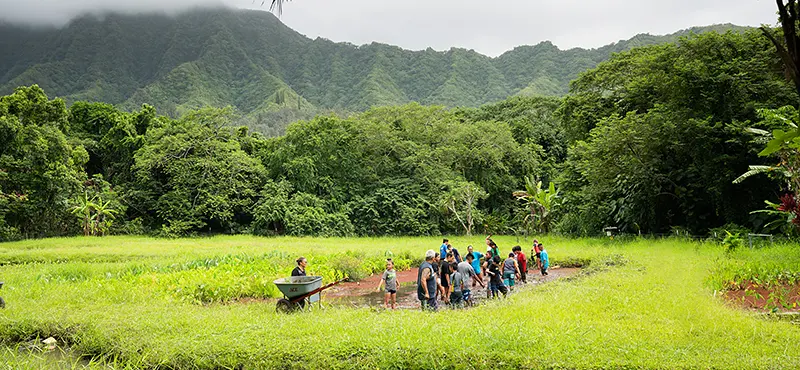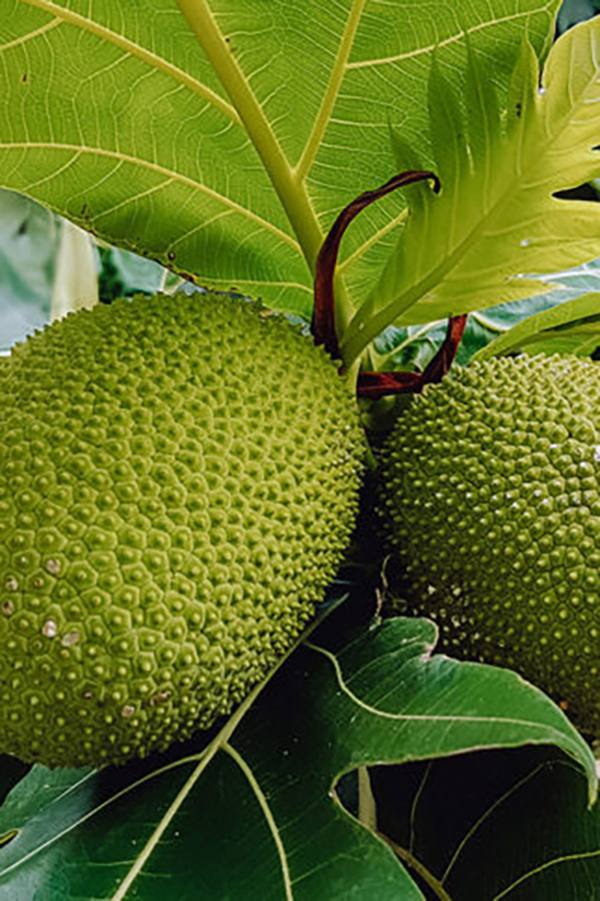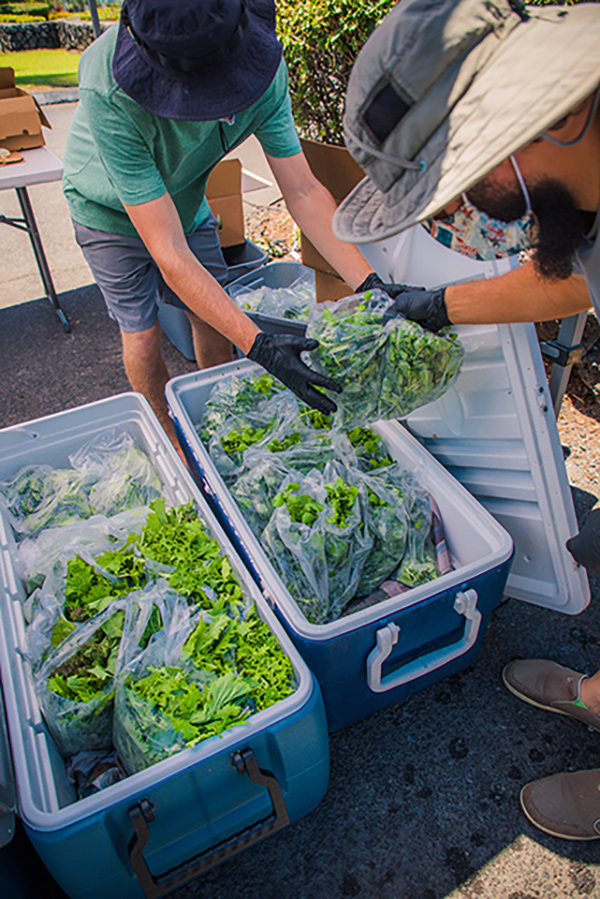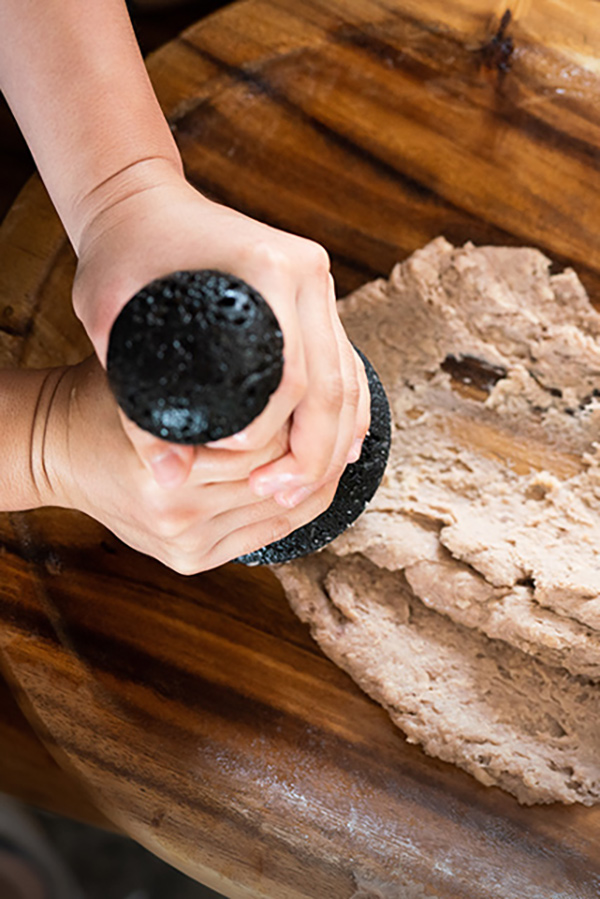At a glance
KS has launched a food systems initiative which includes tackling opportunities in production, processing, and consumption.
In addition to a commitment to increase local protein and produce purchasing to 50% by 2025 in KS cafeterias, KS has committed to a goal of increasing acres in production by sixteen percent (16%) by 2025.
KS has committed to a goal of increasing acres in production by sixteen percent (16%) by 2025 to support local food production across the state.
A+LF | UNSDG 2 | GRI 201, 304, 413 | AAEF 3.0 | SM2025 G3, M18
A+LP, GWE | UNSDG 2 | GRI 201, 203, 304, 404, 413 | AAEF 3.0, 5.0 | SM2025 G3, M18
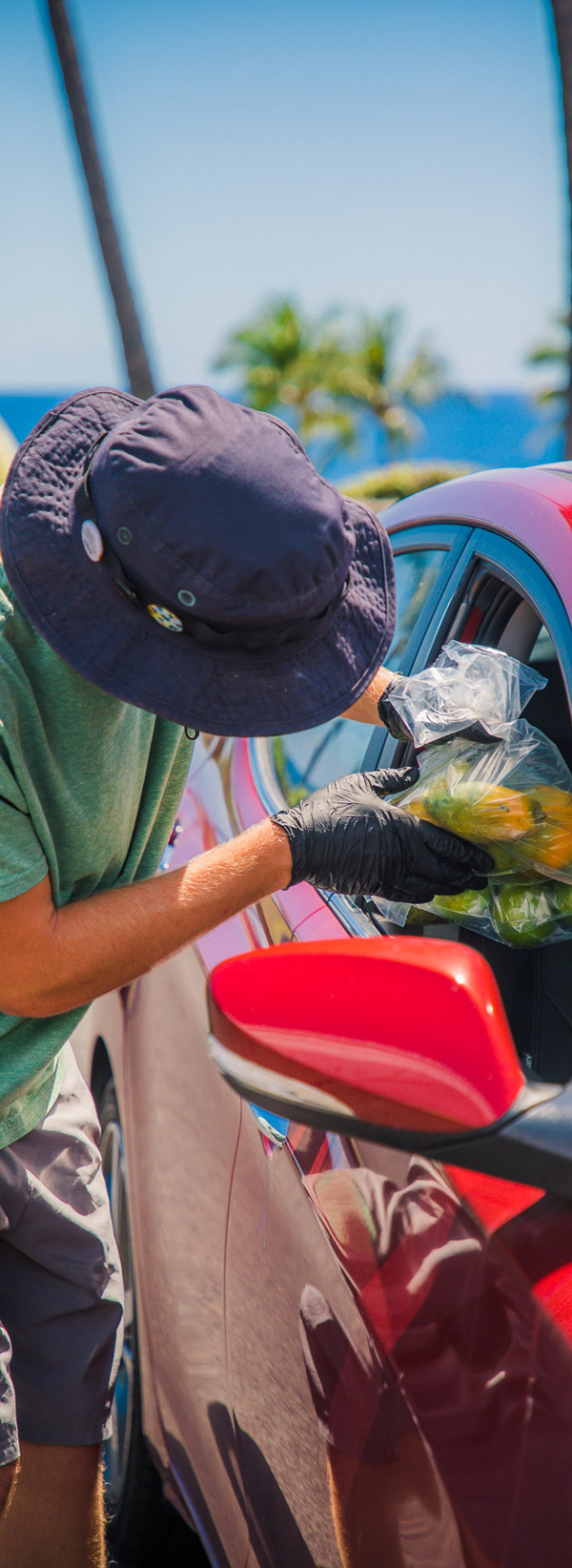
Resilient community food systems
The COVID-19 pandemic exposed the reality of brittle supply chains across the United States. Hawai‘i was particularly vulnerable as the most remote location in the world with a high dependence on imported food.
In order to meet immediate community needs, KS rapidly activated funding and other support for community feeding programs across the state. Through the course of the pandemic, KS adjusted school food service programming and funding to ensure families in need had access to healthy food despite layoffs and business closures.
A multitude of rapid-response initiatives also took place on KS ‘āina via ‘Āina ‘Ulu collaborators. These industrious organizations led the way in supporting their surrounding community by starting or continuing local food farms and gardens. This year, KS and its partners helped distribute 44,560 meals to the community.
In addition, KS leveraged an existing program called Mahi‘ai A Ola. Through a partnership with the Council for Native Hawaiian Advancement and The Kohala Center, food system businesses were provided with training and wraparound services as a part of the Mahi‘ai Scale-Up, an agricultural business plan competition that helps established local farms and food system organizations grow their businesses. Read more about Mahi‘ai Scale-Up here.
A+LP, SSC, GWE | UNSDG 2 | GRI 201, 304, 413 | AAEF 3.0, 5.0 | SM2025 G3, M18
Hawai‘i ‘Ulu Co-Op
The Hawai‘i ‘Ulu Co-operative opened in 2016 with the vision of a network of breadfruit farmers dedicated to reviving ‘ulu (breadfruit) consumption as a way to improve food security in Hawai‘i.
The members (now nearly 100) want to see breadfruit promoted as a local, tasty and nutritious starch with numerous culinary uses. ‘Ulu was historically a significant source of food and KS supports the co-op's efforts to scale production and consumption across the state. Read more here.
A+LP, SSC, GWE | UNSDG 2 | GRI 201, 413 | AAEF 3.0 | SM2025 G3, M18
Good food purchasing
In order to develop a streamlined policy for more sustainable food purchasing, KS is enrolled in The Good Food Purchasing Program, which provides a metrics-based, flexible framework to help assess current purchasing practices.
By completing a third-party baseline, KS hopes to shift its buying power toward five interconnected values: local economies, environmental sustainability, valued workforce, animal welfare, and nutrition.
Read more about the Center for Good Food Purchasing here.
A+LP | UNSDG 2 | GRI 201, 413 | AAEF 3.0, 5.0 | SM2025 G3, M18
Poi for the People
As a part of the Poi for the People initiative, KS supports efforts to increase production and consumption of poi. At KS Maui, a poi mill was installed and the consumption of poi doubled.
KS is also a proud supporter of Kāko‘o ‘Ōiwi, a community partner on O‘ahu. Since 2010, Kāko‘o ‘Ōiwi has restored productivity to approximately six acres of loʻi kalo and has cleared an additional twenty acres of land for diversified agriculture. KS has helped to fund a poi mill and other commercial kitchen items for Kāko‘o ‘Ōiwi. Read more about Kāko‘o ‘Ōiwi here.
A+LP, SSC, GWE | UNSDG 2 | GRI 201, 413 | AAEF 3.0, 5.0 | SM2025 G3, M18




